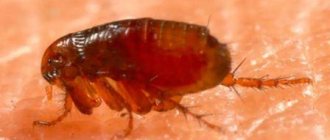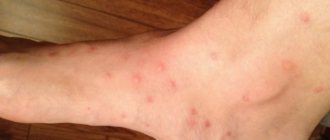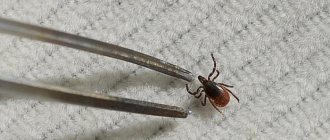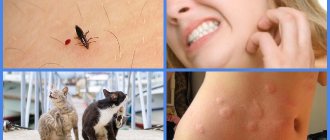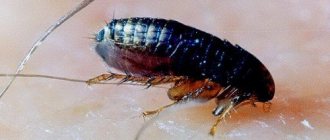13.06.2017 0
3789
The idea that fleas are a problem exclusively for animals has long since sunk into oblivion. Now everyone knows what this parasite is capable of. Indeed, cat (dog) fleas love to drink blood, sparing no one. And if they most often cause only discomfort to animals, then for humans they can become a much more serious problem. Today we will talk about how and why cat fleas bite people, as well as how to get rid of this problem using folk remedies.
What do we know about fleas?
The flea is a blood-sucking ectoparasite, characterized by its small size (on average 1-5 mm, but there are larger exceptions) and also its phenomenal jumping ability. The color of the chitinous exoskeleton of this jumper varies from classic brown to deep black.
The habitat of fleas is incredibly large. These small bloodsuckers can be found even in the snows of the Arctic.
Fleas are not picky in choosing a host. They are able to parasitize all warm-blooded creatures, especially cats and dogs due to their thick fur. They are not found only in fish and various amphibian-reptiles.
Since the community of warm-blooded animals is very diverse, including the class of birds, fleas for each species have some differences in appearance. But the fundamental signs are the same for everyone. Based on them, zoologists classified all flea families into one order.
What fleas can bite humans?
Can fleas live on humans? A person does not have fur like cats, dogs, rodents, does not have plumage like birds, therefore, he cannot be a permanent host for fleas. These parasites cannot reproduce on human skin.
Most often, people suffer from bites from fleas whose permanent hosts are near them. Or from those species that live in the external environment.
Answering the main question of this article, we can safely say that cat fleas bite a person if there are too many of them and the cat is no longer enough for them. If you do not monitor the condition of your pet, fleas can breed in his fur and move into carpets, clothes and bite people. Fleas of other families, such as dog fleas, also do not lag behind in this matter.
Common types of fleas:
- canine;
- felines;
- chicken;
- rat;
- human.
By location:
- domestic;
- earthen;
- bedding;
- sandy.
Can fleas live on humans?
In general, there are several types of fleas. Each species is adapted to a certain body temperature of the host, the chemical composition of its blood and the characteristics of the skin. They are divided depending on who they live on:
- cats;
- dogs;
- Human;
- rats;
- rabbits.
That is, there really are fleas that parasitize humans. But they are very rare, and it is impossible to determine what species the flea that bit you belongs to. In addition, furry friends can often be an intermediate host for fleas living on humans.
The most common type of flea is cat flea
The most common type of flea is cat flea. Unfortunately, cat fleas easily “switch” to both dogs and people. They don’t have to live on them, but cat fleas are quite capable of biting and drinking blood. In a sense, it can be said that fleas in cats are transmitted to humans.
Why do fleas bite some people and not others?
It is not true. Fleas bite everyone, it’s just that people with thin skin, without excess fat, and when blood vessels are located close to the surface of the skin are “tastier” to them. They are also attracted to natural body odor. This is one of the reasons why, under the same conditions, adults do not have bite marks, but children do.
The second factor responsible for the presence of bite marks is sensitive, sensitized skin.
In the photo: cat flea bites on a person
People who have a severe allergic reaction to insect bites always have a painful reaction. This is not only a feeling of pain, itching, swelling of soft tissues at the site of the bite and next to it, but also a general malaise. Most often it is headache, fever, and sometimes shortness of breath.
People who are not prone to allergic reactions, and even with excess subcutaneous fat, may simply not notice or feel the bites of small bloodsuckers.
Why don't cat fleas bite all people?
When there is no cat nearby, parasites are forced to look for another source of food. But it has been noticed that some people are bitten by fleas, while others are not – why this happens, one can only speculate.
The first version is based on the fact that the choice of victim is carried out by blood type. If this were so, only the owners of the first group would suffer - in terms of taste, it is most suitable for blood-sucking insects.
However, in practice the theory is not confirmed. People with the second, third and fourth groups are bitten, and no dependence on rhesus has been established either.
You can often hear the question: why fleas do not bite everyone, but only me. Choose the most suitable option:
- You have thin, delicate skin, thanks to which the ectoparasite’s proboscis easily reaches small vessels. If an insect cannot get to the blood, it will not bother a person.
- You have a cold and fever. Heat attracts fleas; they will choose as a victim the one with a higher body temperature.
- After physical activity, you experience increased sweating. The smell attracts bloodsuckers, but once you take a shower, they will prefer another family member (they will look for someone from the first two categories).
Regardless of the reasons why fleas bite one person and not another, the consequences vary.
How dangerous are cat fleas for humans?
The most harmless harm that can be caused by a cat flea bite is bright spots from noticeably painful bites, scratching, after which traces may remain. If the bites are scratched, and various pyogenic microorganisms, such as streptococci, get into the open wounds, inflammation and suppuration occur.
But this is not the entire list of dangers. It is much worse to get any of the following infections from such a bite:
- anthrax;
- typhus;
- plague;
- infectious encephalitis;
- hepatitis and encephalitis viruses;
- some helminthiases.
It is curious that fleas that carry infections are not able to transmit the infection to their offspring, but they themselves will carry this infection until the last day, each time becoming a source of disease.
The danger of fleas to humans
The question whether fleas bite people or not has a clear answer - of course, yes. Parasites that live on pets are dangerous. They not only create discomfort with their bites, but also infect people with various diseases. Often a person experiences a severe allergy to those components of the parasite’s saliva that prevent the blood from clotting normally.
The reaction is accompanied by redness of the affected area, as well as itching. Pimples and swelling may also appear. The insect infects open wounds because it carries a variety of viruses that are dangerous to humans.
How to distinguish flea bites?
- Flea bites look like stars in small constellations - 2-3 next to each other, but there are no characteristic “paths” between them, as with scabies.
- In the first hours, the bite site resembles a large red swollen spot with a small pimple in the center, then after some time (from several hours to a day) the redness disappears and itching increases.
- The bite itself is accompanied by stabbing pain (like a hot needle) and a pronounced burning sensation.
- Bites are localized mainly on the legs and lower back. If we are talking about a sleeping person, then the arms, neck, and sometimes the upper chest suffer.
In general, flea bites are very similar to bedbug bites. The main difference between them is location.
Signs of bites
Flea bites have several distinctive features:
- since there is no anesthetic in insect saliva, the bite is quite painful;
- a dense bump appears on the skin, and the skin around it turns red and swells;
- the affected area is very itchy, the skin at the site of the bite becomes hot.
Bites
The intensity of the manifestation of bite marks largely depends on the individual characteristics of the bitten person.
How to distinguish flea bites?
Cat flea bites on humans are similar to bites from other insects, such as bedbugs or mosquitoes, but they can be distinguished by several signs:
- unlike bedbug bites - a red spot with a hole in the center, flea bites look like dense red bumps;
- several bites are located chaotically at a short distance from each other, in contrast to bedbug bites running in a path.
Cat fleas bite people throughout the day, while bedbugs bite mainly at night.
On what parts of the body do fleas bite?
Fleas jump 15 - 20 cm in height, so most often they bite people on the legs below the knee - feet, ankles, lower legs. If a person sits on the floor, bites may appear in the pelvic area and on the wrists. In children, due to their small stature, bite marks may appear on other parts of the body, for example, on the stomach or lower back.
Why do clothes protect fleas?
A flea cannot bite a person through clothing, but clothing often helps the parasites. The fact is that it is easier to attach to fabric fibers than to smooth human skin. And by moving across clothing, the parasite will find an open area of the body to bite. In addition, loose clothing can provide cover and protection for insects.
The best clothes against flea bites in the apartment and on the street
The best choice of clothing to protect against insect bites is one that does not expose any skin, such as long pants and socks. The ideal option is to have your trousers tucked into your socks.
To prevent fleas from jumping onto a person's clothing during a walk or from infested cats or dogs, items can be treated with an insect repellent.
What to do if you are bitten by a cat flea?
- Wash the bite site with clean water and soap or a disinfectant - chlorhexidine or peroxide, this will reduce the risk of infection and inflammation.
- Apply antipruritic ointment or cream to the affected area, such as Fenistil or Flucinar. A regular ice cube will also help relieve itching.
- If an allergy occurs, take an antihistamine and consult a doctor.
- Wait until the swelling, itching and redness subside. If inflammation begins, contact the clinic immediately.
Where can a cat get fleas?
A cat's fleas can come from anywhere. Sometimes it’s enough just to let him outside for a walk for a while - he will certainly return not only grimy and foul-smelling, but also with a handful of large adult and very hungry fleas.
The most common breeding grounds for these ectoparasites are:
- infected animals;
- mats, cat houses, beds that have already been used by infected animals;
- wild animals (mice, rats, moles, hedgehogs, foxes, badgers, etc.);
- livestock farms, especially fur farms and those where rabbits are bred;
- heavily infested with fleas rooms, basements;
- forest, fields, meadows, forested areas.
Prevention measures
To avoid dealing with fleas and prevent flea bites on yourself and your pet, you need to learn preventive measures and methods for removing fleas.
If we talk directly about cat fleas, they are very comfortable not only on cats. They also feel great close to their furry pets, and it doesn’t matter at all whether it’s a cozy apartment in a high-rise building or a hay barn in the village.
The first step is protecting your pets. There are a lot of proven means for this:
- insectoacaricidal shampoos;
- flea drops;
- pills;
- anti-flea collars.
It is important to remember that fleas are removed in conjunction with deworming. Detailed recommendations on this issue can be obtained from any veterinary clinic.
For current planned prevention, it is enough to treat your pet once every 3-6 months, depending on the drug chosen, lifestyle and place of permanent residence. Even a cat that doesn’t walk outside can pick up parasites, for example, from a neighbor’s pet or from a stairwell. You can bring flea larvae into your home on your shoes without knowing it, and then wonder where they came from.
The second stage of prevention is no less important. It applies to the treatment of places where pets are kept. For this purpose, a wide variety of products are also produced: repellent sprays, solutions, emulsions, liquid detergents.
Wash your cat's bedding and other favorite soft items that may contain flea eggs. If possible, steam them with a household steamer at maximum temperature and treat them with the purchased product. Wash all floors, disinfect bedspreads and carpets in the apartment.
